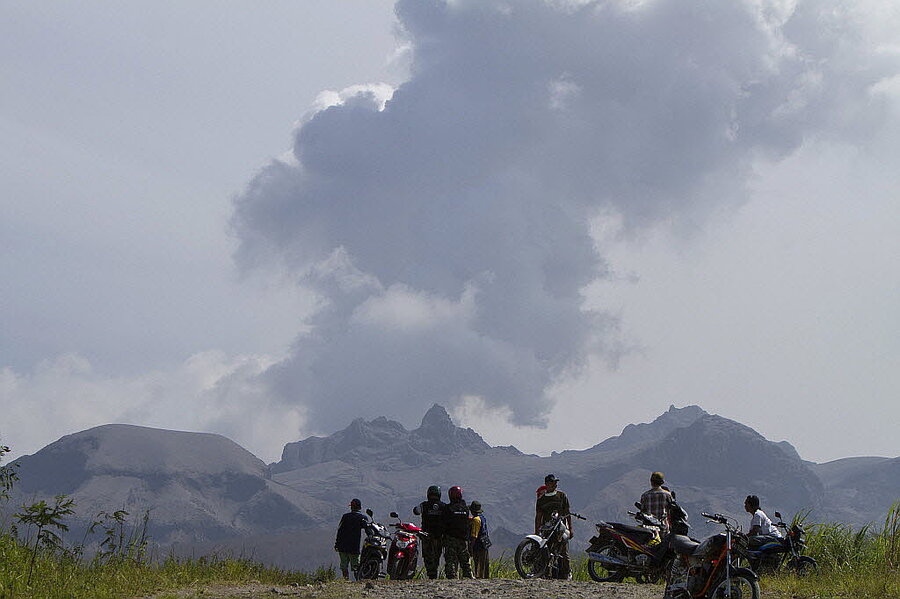Volcanoes, trade winds may be behind 'pause' in global warming
Loading...
Volcanic eruptions and undersea heat storage have emerged as lead suspects contributing to a hiatus in global warming, according to teams of researchers trying to parse the pause.
The unexpected pause during the past 12 years follows two decades of rapid increases in surface temperatures. And it has come despite a rapid increase in atmospheric concentrations of heat-trapping carbon dioxide since the 1960s.
This has led a small subset of climate scientists to argue that the climate may not be as easily altered by rising CO2 levels as climate models suggest. And it has prompted some commentators skeptical of a human influence to go so far as to pronounce global warming over.
Despite the pause, the 2000s closed out with the warmest year on record, compared with the 1910-to-2000 average, while the decade as a whole was the warmest on record. Researchers note that one or two decades of relatively stable, or even cooling, surface temperatures don't represent the long-term trends over which global warming is occurring. A slight cooling trend occurred between 1940 and the mid '70s, only to yield to renewed warming after conditions driving the slight cooling trend lifted.
Still, within the past several years researchers have worked to understand the causes for the hiatus. Two recent studies typify the effort.
In one, researchers used observations of volcanic activity between 1998 and 2012 and modeling studies to see if the eruptions could help explain at least part of the hiatus, as seen in the temperatures in the lower troposphere.
Volcanoes blast sulfuric acid droplets and tiny sulfate particles into the stratosphere, which sits above the troposphere. There, these aerosols warm the stratosphere and cool the troposphere for one or two years before the particles fall away.
The models used for the latest round of climate reports from the Intergovernmental Panel on Climate Change Change do not include the effect of aerosols after 2000, according to the team conducting the study and led by Benjamin Santer, a climate researcher at the Lawrence Livermore National Laboratory in Livermore, Calif. Yet 17 eruptions took place between 1998 and 2012. More than half occurred in the tropics, where incoming sunlight is strongest.
While each eruption was modest, taken together they increased the stratosphere's opaqueness by 4 to 7 percent a year between 2000 and 2009, the team estimates.
When the team set up simulations using real-world values for aerosols and subtracted the effects of natural climate swings, the results brought the modeled temperature trend into much closer alignment with what scientists actually have measured since 2001.
Looking at the past decade's volcanic eruptions, "I don't think they can be left out as not being significant," says Susan Solomon, a climate scientist at the Massachusetts Institute of Technology in Cambridge, and a member of the research team reporting the results in this week's issue of Nature Geoscience.
A second group combined models and measurements to explore the ocean-storage connection.
Over the past 20 years, the westward-blowing trade winds have intensified to unprecedented levels, something climate models haven't captured, explains the team, led by Matthew England, a climate scientist at the University of New South Wales in Australia.
The winds have carried warm surface waters west, where they converge and accumulate at ever-deeper depths. In the eastern Pacific, the warm surface waters are replaced with cold water welling up from the deep ocean and spreading west into the central Pacific as well as along the coasts of South and North America. The team estimates that over the past 20 years this process has cooled the climate sufficiently to account for about half of the difference between global surface temperatures as measured and as modelled.
If the pattern in trade winds holds through 2020, global average surface temperatures are unlikely rise to much above the 2001-to-2010 average during this time, the team estimates. If the winds ease up sooner, look for temperatures to resume their rise sooner.
The results were published Feb. 9 via the online edition of Nature Climate Change.
Researchers add that these and other factors likely are working simultaneously. Indeed, scientists at the National Center for Atmospheric Research in Boulder, Colo., are working on the relative attribution issue now, says Gerald Meehl, a climate scientist there. Even so, he adds, previous studies have indicated that natural variability in the tropical Pacific alone, such as the variability Dr. England and colleagues explored, is enough to trigger pauses all by itself and in a climate warmer than today's.








